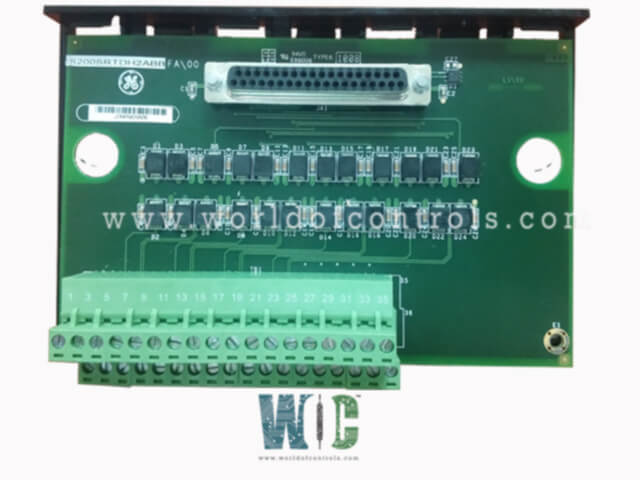
World Of Controls understands the criticality of your requirement and works towards reducing the lead time as much as possible.
IS220SRTDH2A - Simplex RTD Board is available in stock which ships the same day.
IS220SRTDH2A - Simplex RTD Board comes in UNUSED as well as REBUILT condition.
To avail our best deals for IS220SRTDH2A - Simplex RTD Board, contact us and we will get back to you within 24 hours.
Part No.: IS220SRTDH2A
Manufacturer: General Electric
Country of Manufacture: United States of America (USA)
Size: 17.8 cm wide x 33.02 cm high
Temperature: -30 to + 65oC
Technology Surface-mount
Product Type: Simplex RTD Board
Availability: In Stock
Series: Mark VIe
IS220SRTDH2A is a Simplex RTD Board developed by GE. It is a part of the Mark VIe control system. It is engineered with a compact design, offering flexibility for DIN-rail or flat mounting configurations. This versatility allows for seamless integration into various system setups, accommodating different installation requirements. Within Mark VIe systems, the SRTD collaborates seamlessly with the PRTD I/O pack. This integration involves the I/O pack interfacing through a DC-37 pin connector and establishing communication with the controller via Ethernet connectivity. It's important to note that this compatibility is exclusively available for simplex systems.
In normal operating conditions, the RUN status is indicated by a flashing green LED, while a solid red LED signifies a FAIL condition. The third LED remains off under normal circumstances but illuminates a steady orange to indicate the presence of a diagnostic alarm condition on the board. The diagnostic checks encompass two primary types: hardware limit checking and system limit checking, ensuring thorough scrutiny of all inputs:
The WOC team is always available to help you with your Mark VIe requirements. For more information, please contact WOC.
What is IS220SRTDH2A?
It is a Simplex RTD Board developed by GE under the Mark VIe series.
What are the indicators of normal operation and failure on the PRTD?
In normal conditions, the RUN status is indicated by a flashing green LED, while a solid red LED signifies a FAIL condition. Additionally, a steady orange LED indicates the presence of a diagnostic alarm condition.
What types of diagnostic checks are performed on the PRTD inputs?
The PRTD undergoes hardware limit checking and system limit checking on its inputs to ensure comprehensive scrutiny.
What is hardware limit checking, and how does it work?
Hardware limit checking involves preset high and low levels near the operational range extremes. If these limits are exceeded, a logic signal is triggered, and the input ceases to be scanned.
What is the significance of the diagnostic alarm denoted as L3DIAG PRTD?
L3DIAG PRTD indicates a composite diagnostic alarm triggered by any hardware limit set for the 00 input, referring to the entire board. Detailed diagnostics for individual signals are available through the toolbox.